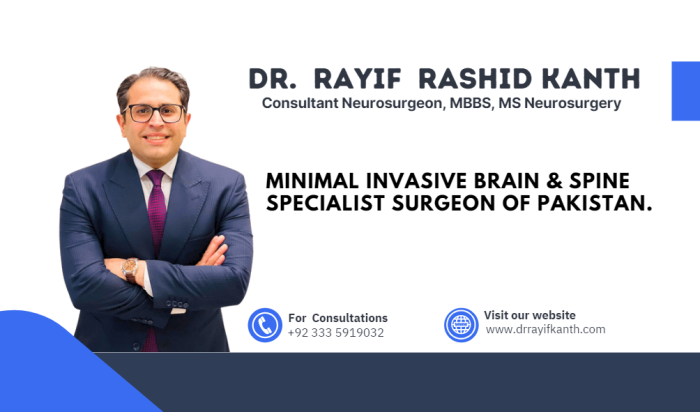Read Original publication here: Role of Surgical Feeding Gastrostomy in Patients Requiring Prolonged Nutrition in a Neurosurgical Department

Role of Surgical Feeding Gastrostomy in Patients Requiring Prolonged Nutrition in a Neurosurgical Department
Table of Contents
ToggleAuthors
- Muhammad Mujahid Sharif – Classified Neurosurgeon, Fouji Foundation Hospital Rawalpindi
- Rayif Rashid Kanth – Assistant prof Neurosurgery Islamabad Medical & Dental College, Islamabad
- Umar Farooq, Asim Shahzad, Mehwish Aslam, Sami ur Rehman – Postgraduate Residents Pakistan Institute of Medical Sciences Islamabad
- Khaleeq uz Zaman – Professor neurosurgery Pakistan Institute of Medical Sciences Islamabad
Abstract
Objective
To build up the nutritional status of the neurosurgical patients with an easy and practical way.
Methods
This prospective study was conducted in Neurosurgery department of Pakistan Institute of Medical Sciences Islamabad in a six months’ time. In total thirty adult patients of either gender with H/O road traffic accident with severe head injury and GCS less than 8/15, persistent vegetative state, brain tumor patients who had developed lower cranial nerve palsies were included in the study. 28 for two way Foleys catheter was used in feeding gastrostomy.
Results
Thirty patients, with the median age of 35 years (range, 18-55 years) underwent feeding gastrostomy. Before the gastrostomy tube insertion, 18 patients had enteral nutrition by a nasogastric tube and 10 had parenteral nutrition (PN), with a median duration of 14.5 (range, 4-60) and 12 (range, 7-25) days, respectively. Two patients accidentally pulled out the gastrostomy tubes 10 and 11 days after insertion. Buried bumper syndrome developed in 1 patient. Two patients died 8 and 34 days after the procedure in the neurosurgical ICU. Twenty-eight patients were discharged from the hospital while being fed via the gastrostomy tubes. In 11 patients who were able to resume oral feeding, the tube was removed, with a median interval of 62 (range, 25-150) days. There was no Procedure-related mortality.
Conclusion
An improvised method of nutritional support according to our circumstances. This study can be extended to other surgical and medical patients who need nutritional support for longer period of time.
Introduction
There is a consensus that nutritional support, which must be provided to patients in intensive care, influences their clinical outcome. Malnutrition is associated in critically ill patients with impaired immune function and impaired ventilator drive, leading to prolonged ventilator dependence and increased infectious morbidity and mortality.
Enteral nutrition is an active therapy that attenuates the metabolic response of the organism to stress and favorably modulates the immune system. It is less expensive than parenteral nutrition and is preferred in most cases because of less severe complications and better patient outcomes, including infections, and hospital cost and length of stay.
Methods and Materials
Patient Selection
The study included patients with:
- Severe head injury cases (age 18-55 years)
- Persistent vegetative state
- Brain tumors with lower cranial nerves involvement
- Patients unlikely to resume oral feeding within 3-4 weeks
Surgical Procedure
- Midline linear supraumbilical incision for mini laparotomy
- Dissection until stomach exposure
- Placement of 28fr Foleys catheter
- Stomach anchoring with posterior abdominal wall
- Closure in layers with appropriate dressing
Results
Complications
- Two patients pulled out gastrostomy tubes (days 10 and 11)
- One case of buried bumper syndrome
- Two deaths in neurosurgical ICU (unrelated to procedure)
- No procedure-related mortality
Outcomes
- 28 patients discharged with functioning gastrostomy tubes
- 11 patients resumed oral feeding
- Median tube removal interval: 62 days (range 25-150 days)

Expert Neurosurgical Care When Every Minute Matters
Advanced, minimally invasive brain and spine treatment by Pakistan’s leading neurosurgeon
Schedule a consultation with Dr. Rayif Kanth 📞 0333 5919 032
Discussion
The study demonstrates that surgical feeding gastrostomy provides several advantages:
- Cost-effective alternative to PEG
- Suitable for resource-limited settings
- Allows for wider tube diameter (28fr)
- Compatible with semi-solid foods
- Simple post-procedure care
Conclusion
Surgical Feeding Gastrostomy proves to be an easy and practical way to build up the nutritional status of patients. This improvised method of nutritional support is particularly suited to our circumstances and can be extended to other surgical and medical patients requiring long-term nutritional support.
